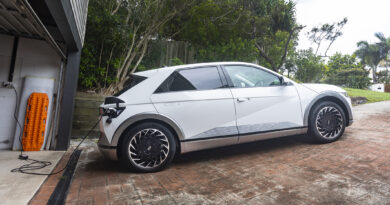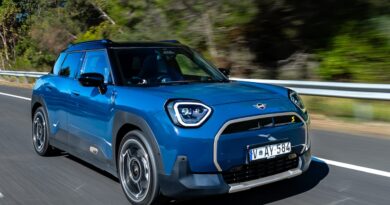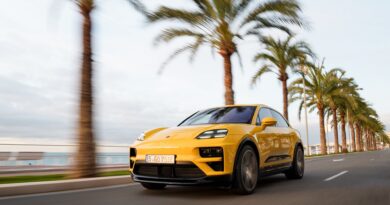BMW i8 Coupe review
BMW’s revolutionary i8 supercar may be soon retired, but this plug-in extrovert still has the power to shock and awe
Introduction
Before the new millennium dawned – as we filled our Falcons and Commodores with trusty ol’ leaded petrol – if we dared dream of an electric car future, said car looked very much like the BMW i8.
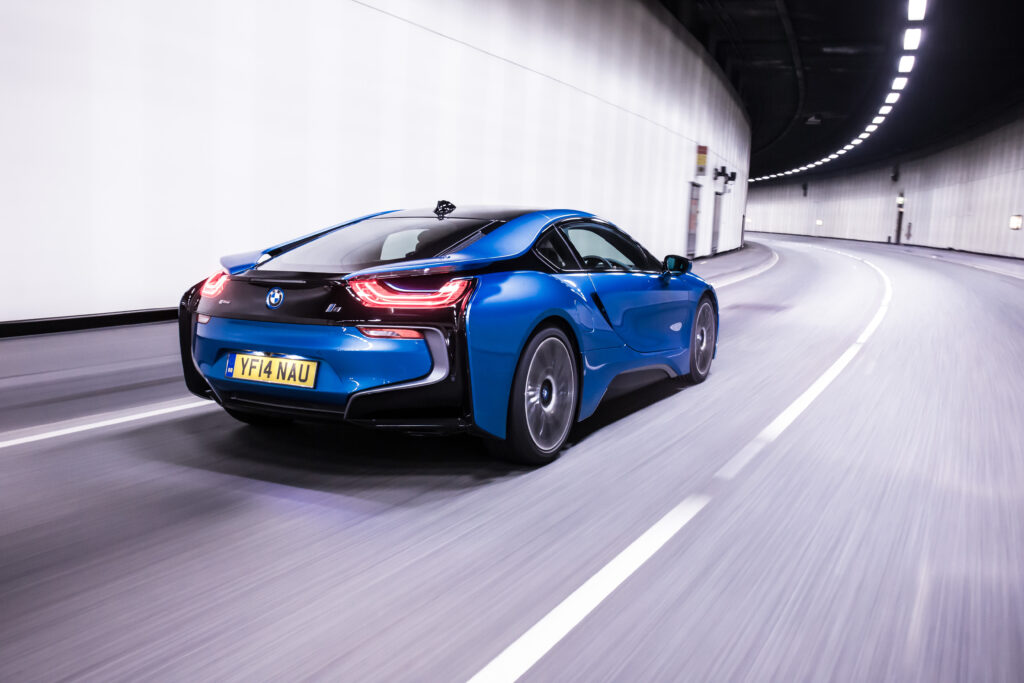
Yet despite the i8’s many awards, positive reviews, ground-breaking tech and ability to astonish, BMW’s pulling up stumps on the model. “The world’s highest-selling plug-in hybrid sportscar” is BMW’s positive spin as the i8 slinks into retirement with over 20,000 global sales chalked up (156 in Australia at last count), but there remains minimal competition in the i8’s niche playground. Still for sale brand new, but massive depreciation makes finding a low-kilometre pre-loved version the better bet.
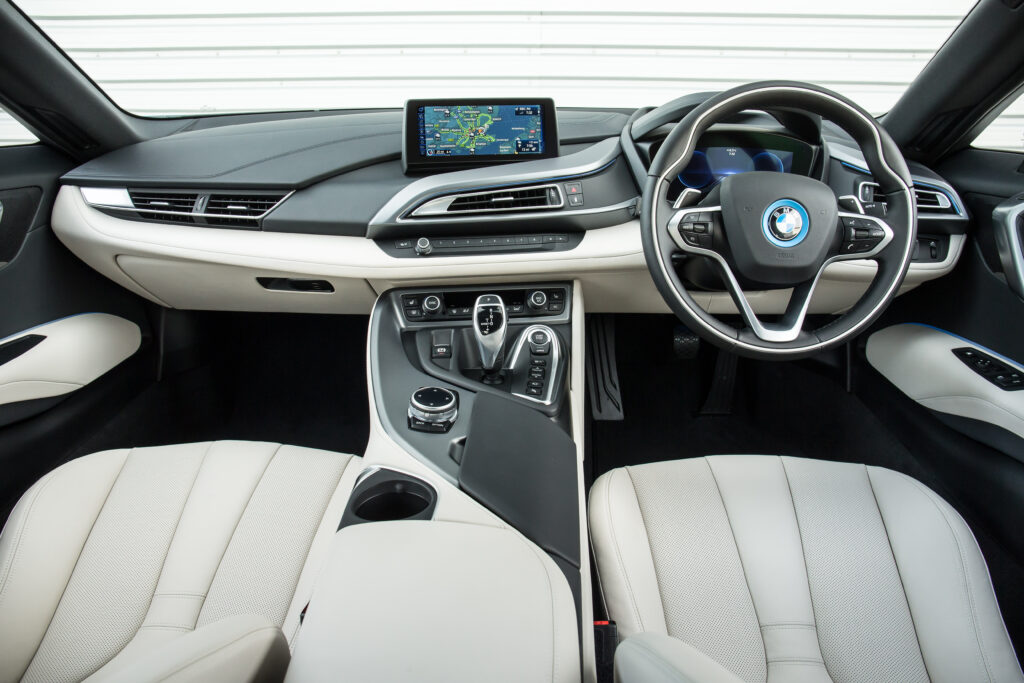
Value
The i8 in Coupe guise is $318,900 plus on-roads, and the drop-top Roadster $348,900. Only the M8 Competition supercar ($352,900) and V12 M760Li limousine ($378,900) price-eclipse these plug-ins at BMW showrooms. All are, of course, very different automobiles.
If you see value in the spectacular, the i8 can trump many an Italian or British supercar for visual clout. But for this kind of money you can take your pick from the current Porsche 911 range, an Aston Martin Vantage, Mercedes-AMG GT and almost a McLaren 540C. Each offer the more traditional supercar experience of visceral noise and face-sucking acceleration, while the i8 eases itself to 100km/h in a relatively unspectacular 4.4-seconds.

The passenger cell is made of carbon fibre reinforced plastic, and can be no-cost optioned with Dry Carbon interior trim to show it off. Opening those frameless scissor doors to be greeted with carbon fibre weave everywhere is suitably sensational.
Your outlay buys 20-inch bi-colour light alloy wheels, adaptive LED lighting, ceramic and carbon interior touchpoints, an abundance of natural leather across the surfaces, 10.25-inch colour touchscreen, harman/kardon surround sound and the “premium suite” of BMW ConnectedDrive features such as real-time traffic information, concierge services and intelligent emergency call. Apple CarPlay, rather stingily, is $623 extra.
You also get those rarest of supercar things – two rear seats. Well, little buckets for little people.
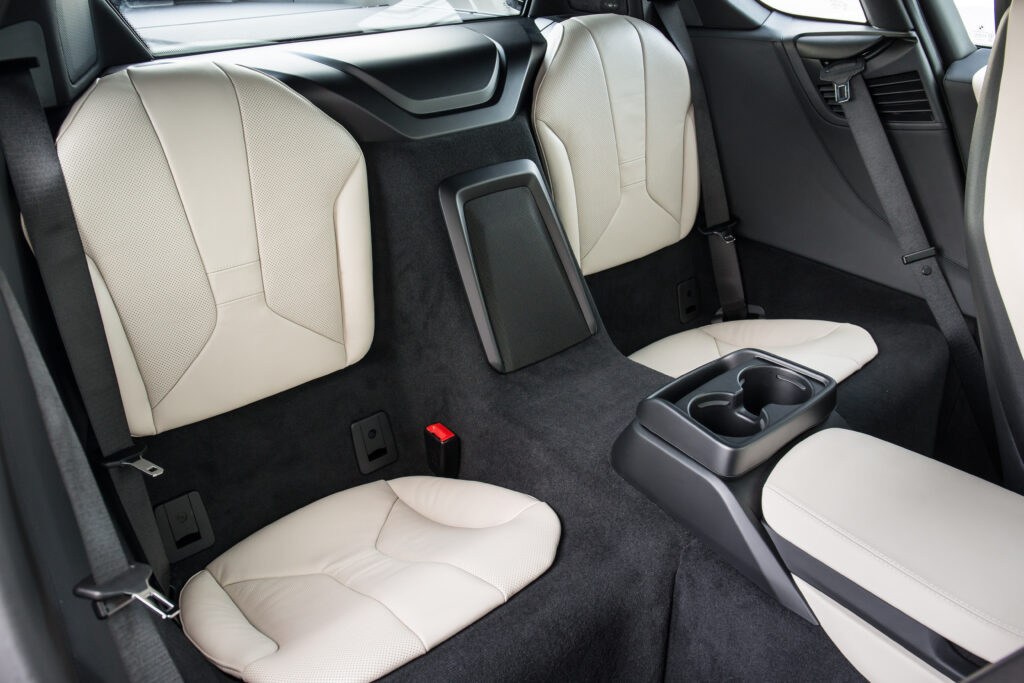
The i8 comes with a three-year/unlimited-kilometre warranty with an eight-year/100,000km battery warranty. Services are condition-based and there’s a selection of prepaid service plans available.
There’s little sense paying BMW’s list price for an i8. Two 2015 examples with just over 10,000km showing have shed half their initial cost, while a 2017 model with 6500km on the clock is up for $169,990. A 2018 with just 1000km travelled is $230,000 on the road. Such painful depreciation has been seen in all markets where the car’s sold.
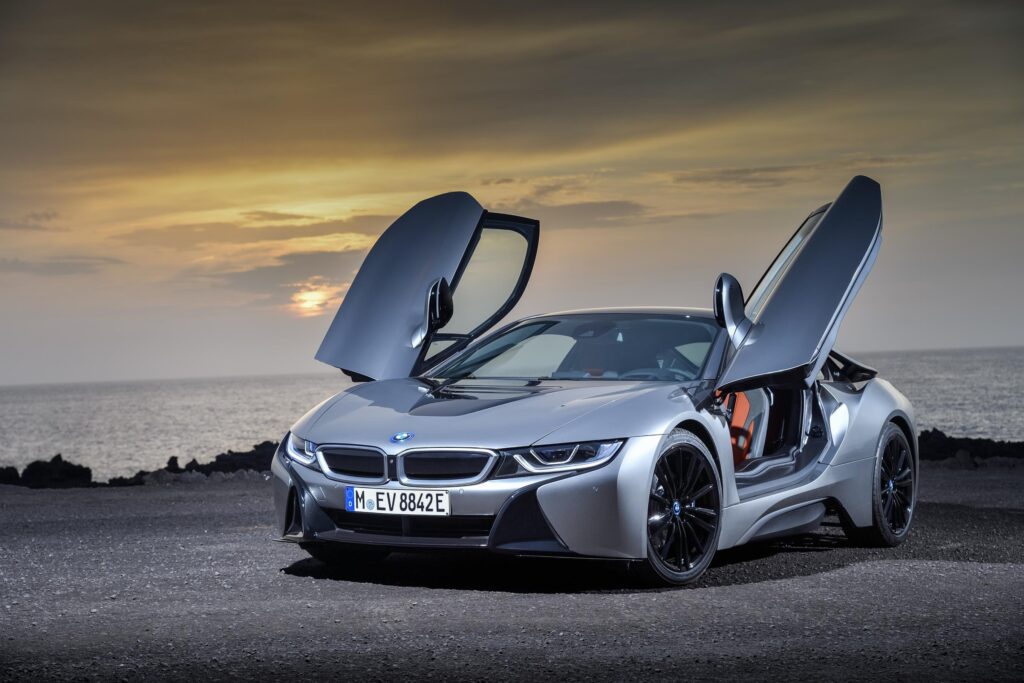
Inside
There’s a technique to getting in and out of an i8, and it must be mastered or you soon lose all the street cred you’d accrued driving one. Yoga veterans should be able to navigate the wide sill effortlessly – those with dodgy hips and knees less so – then when snug in the surprisingly comfy seats, you need to reach over and up to pull down the door. Scissor doors are cool, but not easy.
You sit low, but the cabin’s surprisingly spacious, not least when you spot the two occasional seats behind, which partly compensate for a comically small 154-litre boot space. At least you can sling overnight bags in the back seats when needed.
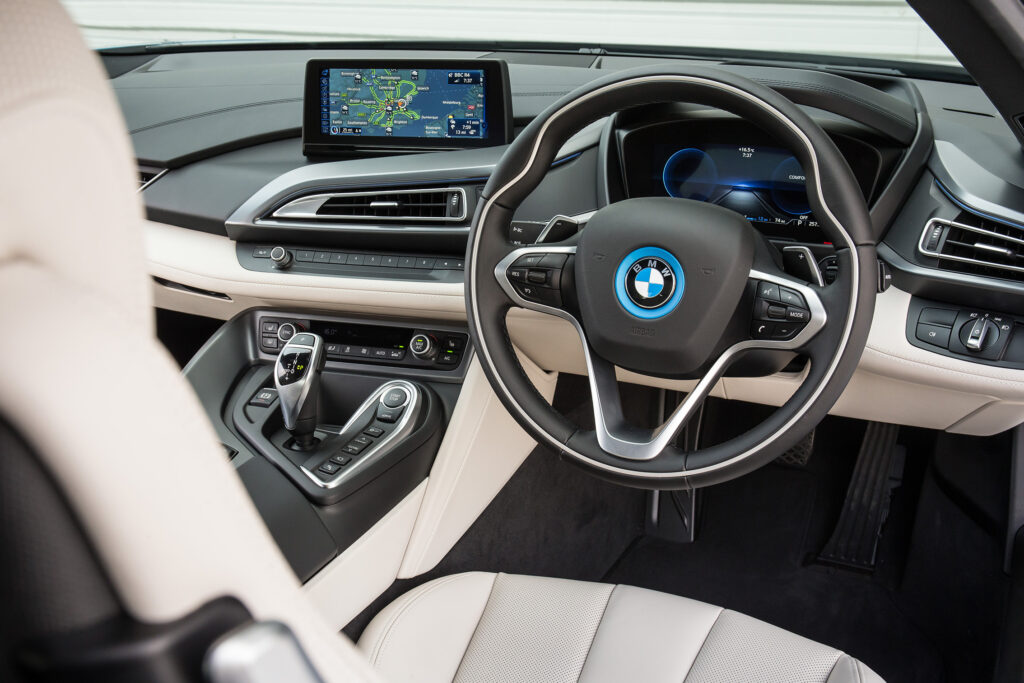
Most buttons and dials are your typical BMW fare – perhaps disappointingly so if you were expecting a more futuristic experience – but it’s familiar, easy to use and the likes of a digital dashboard, blue surround for the steering wheel badge, ceramic controls and sculpted, leather-coated surfaces are classy touches. Build quality looks excellent, seat heating and bi-zone climate control cover your comfort, but the cabin lacks a bit of the spectacular. At this price, a bit more flair is expected.

Performance and efficiency
Under the bonnet sits BMW’s 170kW/320Nm 1.5-litre three-cylinder twin-turbo engine, which drives the rear wheels. The same engine – in less potent form – is used in Mini Coopers. The front wheels are turned by a 105kW/250Nm hybrid synchronous electric motor, combining to bring an encouraging 275kW/570Nm.
Its 4.4-second sprint to 100km/h is achieved by shifting into Sport mode – the dash dials turn to red at this point – and it’s an instant, rapid adrenaline rush. There’s no seat-pinning, wall of noise and greedy fuel consumption of a modern supercar, but the i8’s three-cylinder offers a pleasingly rorty note, the six-speed auto slickly navigates changes and there’s tremendous pull in the mid-range as the electric motor helps with the heavy lifting.
Electric-only range is 40km, fuelled by a 7.1kWh Li-ion battery, of which 5.2kWh is usable. This should cover the silent city commute of many, and my test showed the range was attainable if you ignore the i8’s performance potential. Exploit its acceleration too often and that 40km range better involve a lot of downhills.
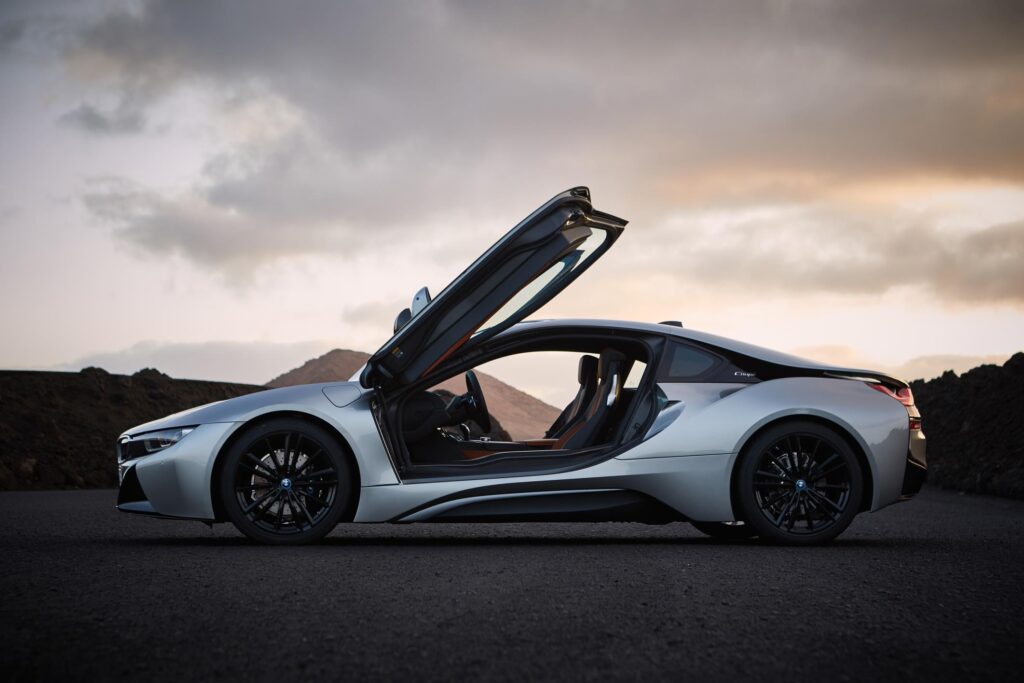
Its carbon passenger compartment and aluminium chassis have kept kerb weight down to 1560kg – for context, that’s 100kg less than a Mini Countryman PHEV – aiding the official 2.2L/100km fuel use figure. Overall, I saw closer to 5L/100km, but key is to have it running on electric only at low speed. City traffic? Ideal.
Charging
The i8 uses the Type 2 socket, but can also be recharged from a conventional household power socket in under three hours, or under two hours with a 3.7kW (16A/230V) BMW Wallbox (around $2000). It can’t DC fast charge, and BMW claims the electricity use is 11.9kWh/100km.
The instrument cluster displays charge progress, or you can download the BMW i Remote app to your smartphone to show current battery charge level and electric range.
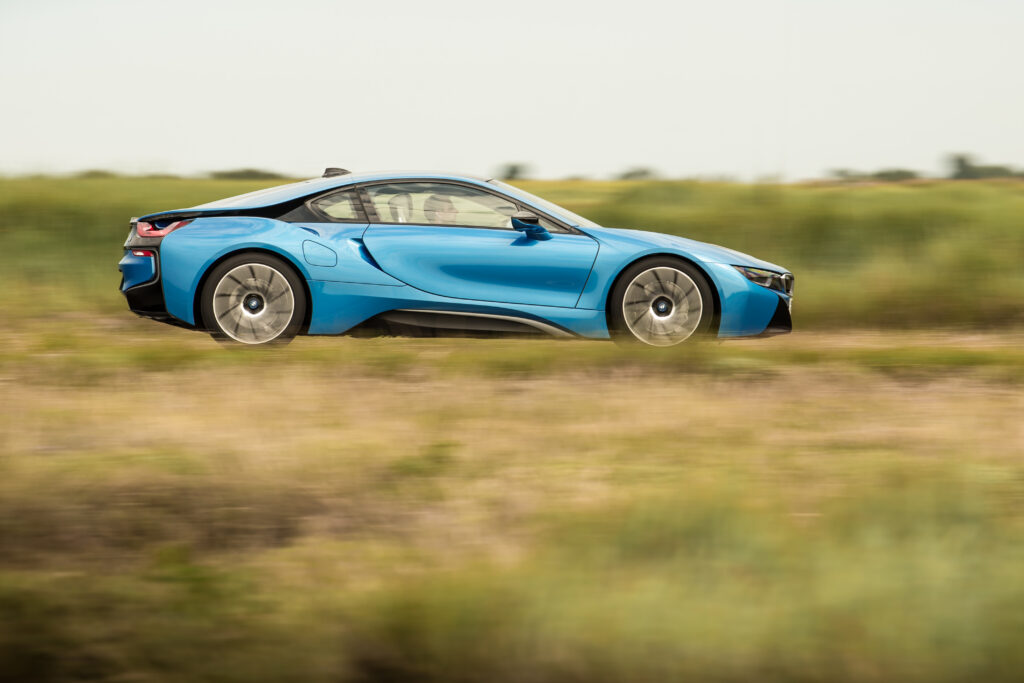
Ride and handling
You can’t go carving across your favourite mountain passes as you would a fat-rubbered supercar. The i8’s narrow tyres (aiding fuel efficiency) do a decent job on the grip front until you really push things, and the low centre of gravity and all-wheel-drive give a planted, secure feel at speed.
The steering feels somewhat vague during twisty road playtime, but in typical BMW fashion it’s rapid to obey turn-in instructions, and by flipping through the gears on the steering wheel paddles there’s a heightened sense of control over proceedings. It may not be blisteringly quick, but it’s tremendous fun.
Ride comfort is standout for such a low-slung extrovert. BMW’s Dynamic Damper Control (included as standard) adjusts damping depending on your selected drive mode, and keep things in Comfort setting and bumps are well absorbed around town or at highway speeds. A refined ride you could live with every day.
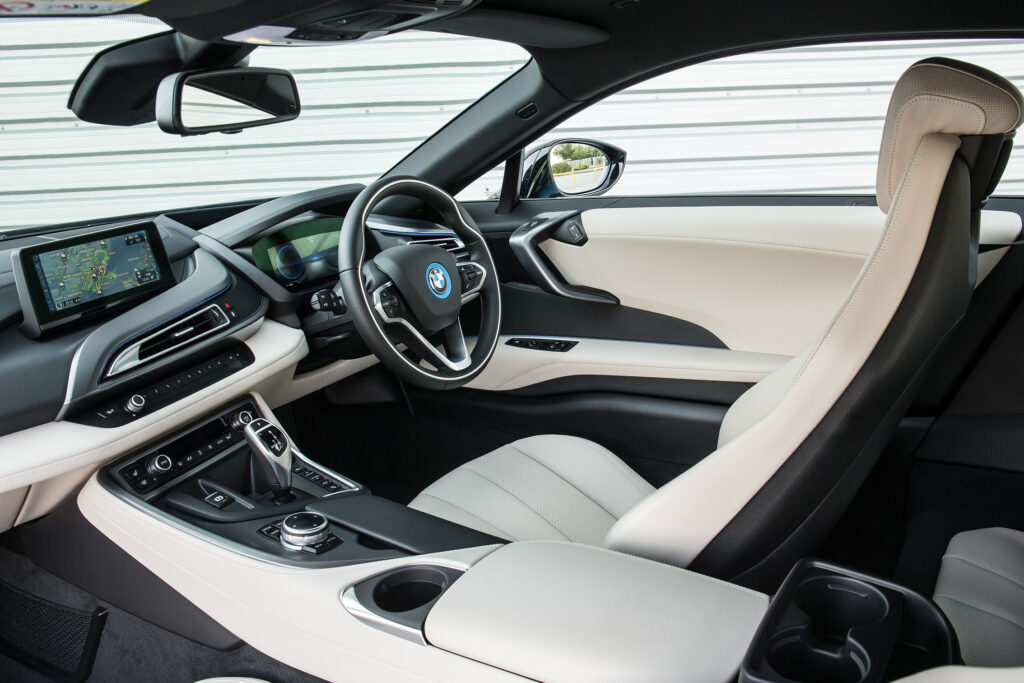
Party tricks
Those doors, clearly. Pull up outside your favourite café, boutique store or nightclub, leave the doors up and watch the cameras come out as all-comers pose for their Insta-worthy close-ups. Ask Lamborghini – there’s nothing like a scissor door to attract a crowd.
More showboating’s to be had with the BMW Display Key. Its LCD colour touchscreen integrates with BMW’s Connected app while looking suitably space-age in your hand. Just don’t drop it in a puddle.

Safety
There are six airbags, rear view camera, surround view, a head-up display, parking sensors and camera-based driver assistance giving speed limit information and city-specific autonomous emergency braking. This functions only up to 60km/h making it basic compared to modern AEB systems. No blind spot monitor, lane keep assist or rear cross traffic alert highlight the i8’s age.
Verdict
A hybrid undoubtedly ahead of its time, which along with BMW’s i3 has served to give credibility and sexiness to the electrification of the German brand’s more mainstream models.
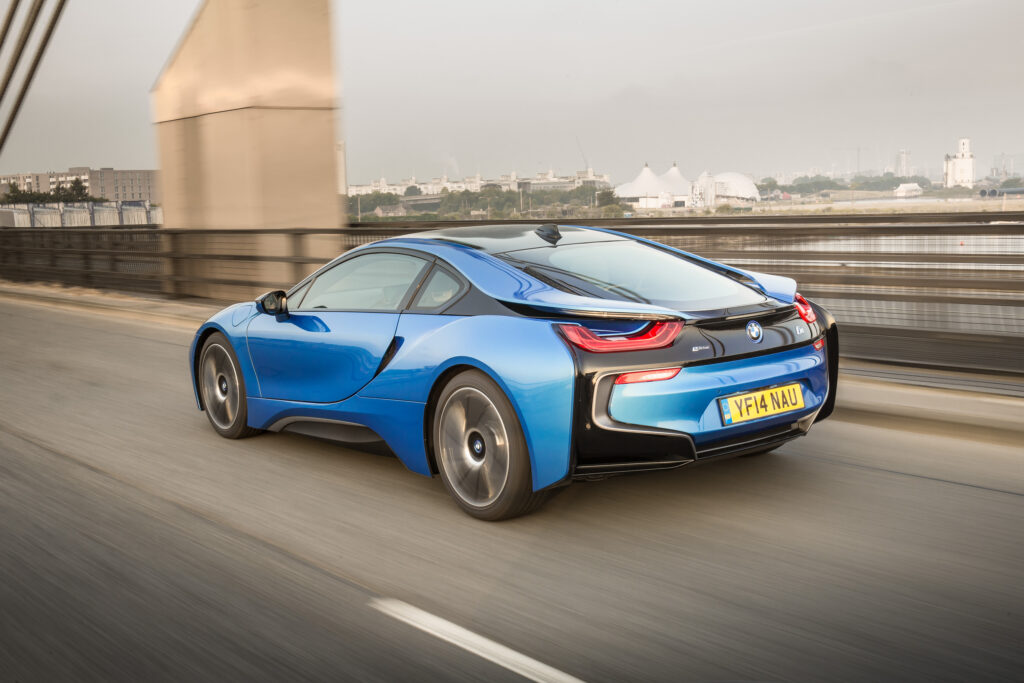
The i8 looks and is priced like a supercar from a bedroom wall poster, but can’t match the outright thrills of high power, big displacement petrol rivals. Its futuristic style trumps practically anything else on the road however, and its advanced lightweight construction, hybrid technology, superb engineering and fun to drive nature make it a compelling vehicle that deserves its place in BMW’s hall of fame.
Gone too soon, but the future surely holds a full electric replacement BMW to take the fight to rival battery-powered exotica.

BMW I8 COUPE SPECIFICATIONS
Price: $318,900 (plus dealer and on-road costs)
Warranty: 3 years, unlimited km
Battery warranty: 8 years, 100,000km
EV type: PHEV
Engine: 1.5-litre 3-cylinder turbo, 170kW/320Nm
Motor/s: 105kW/250Nm hybrid synchronous electric motor
Power/torque: 275kW/570Nm
Transmission: 6-speed automatic, all-wheel drive
Fuel use: 2.2L/100km
Electricity use: 11.9kWh/100km (BMW Group)
Charger types: Type 2
Battery capacity: 7.1kWh (5.2kWh usable)
Claimed range: 40km (electric only)
Maximum charging power AC/DC: 3.7kW/N/AkW
0-100km/h: 4.4 seconds
Top speed: 250km/h


